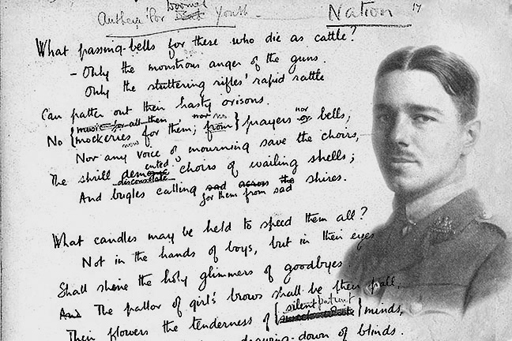3.1.1 Grief and mourning in literature and art

Given the scale of the casualities, the psychological damage of the war extended beyond the battlefields. On the home front, many families, friends and fiancés never saw their loved ones return. Sometimes there were considerable delays before families learnt of a death. On 4 November 1918 the now-famous poet Wilfred Owen died while crossing the Sambre-Oise Canal in northern France. This was a successful operation for the British and victory was in sight, but it was not until the armistice that Owen’s mother discovered the news of her son’s death. For every well-known casualty, like Owen, there are dozens of victims whose names we have now forgotten, but whose loss was equally mourned at the time.
The bereaved developed a variety of methods for coping with their grief. To console themselves they often sought to attribute meaning to the deaths of their loved-ones. The notion that the dead had died for a valid cause offered solace for many, but this could lead to conflicting emotions, as the example in the next section demonstrates.
Grief was a recurring theme in art and literature, both during and after the war. Like everyone else, artists and writers struggled to make sense of the losses around them, and in many cases they also mourned their own personal losses and dealt with their own grief in their work. Next, you will look at some case studies, starting with the example of Vera Brittain.
